Hospice Public Reporting of New Claims-Based Quality Measures Begins in May 2022
Are you ready?
The Centers for Medicare & Medicaid Services (CMS) final rule governing hospice payment and policy changes for fiscal year 2022 (FY2022) included changes to the Hospice Quality Reporting Program (HQRP). The HQRP is derived from three sources: claims, Hospice Item Set (HIS) and the Consumer Assessment of Healthcare Providers and System (CAHPS). Included in the new public-reporting requirements are the existing Hospice Visits in Last Days of Life (HVLDL) measure and the new quality measure, the Hospice Care Index (HCI).
Composition of the Hospice Quality Reporting Program
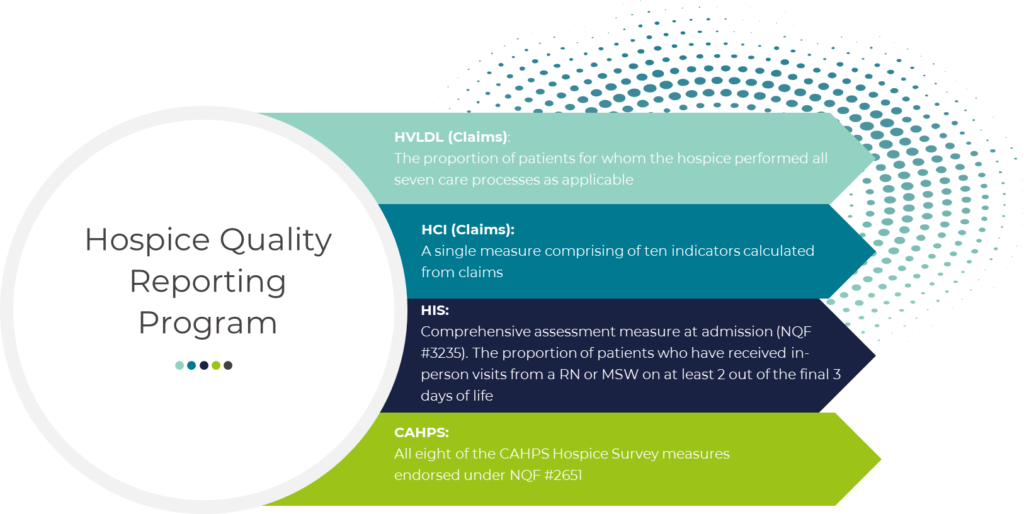
Why focus on claims data?
CMS acknowledges that claims are a valuable and reliable source of process and utilization data that naturally reduces the provider burden by eliminating the need for additional data collection via the Hospice Item Set (HIS). The claims-based data component of the CMS comprehensive HQRP complements quality measures already within the program by delivering insight into the actual care provided, via presentation of a more direct reflection of care delivery decisions and operational practices than could be discerned from assessments or surveys alone.
What are the claims-based measures subject to public reporting?
Hospice Visits in the Last Days of Life (HVLDL)
The Hospice Visits in the Last Days of Life (HVLDL) quality measure was added to the HQRP in FY2021, replacing the Hospice Visits when Death is Imminent measure which was part of the Hospice Item Set (HIS). The new HVLDL measure reports the number of patient stays in which the patient and/or caregiver received at least two days with visits from registered nurses or medical social workers in the final three days of life.
How is HVLDL calculated?
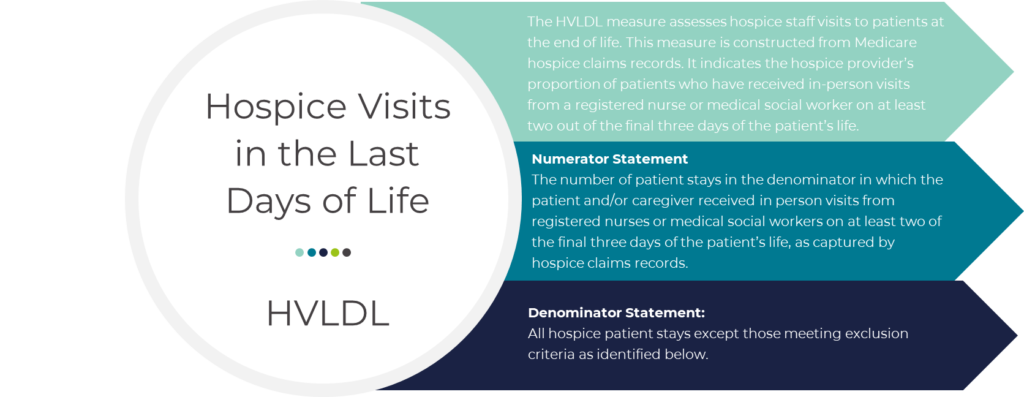
Hospice Care Index (HCI)
The purpose of the HCI, according to CMS, is to convey a broad overview of the quality of the provision of hospice care, throughout the hospice stay. Comprised of ten individual indicators, the HCI captures many aspects of hospice care with a broad, holistic set of claims-based quality measures.
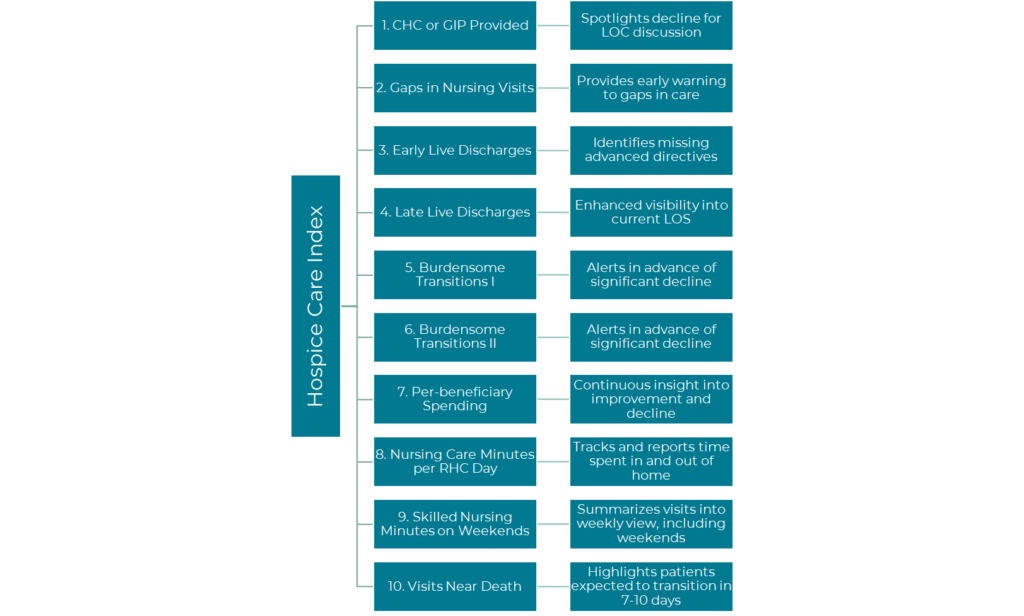
How is HCI calculated
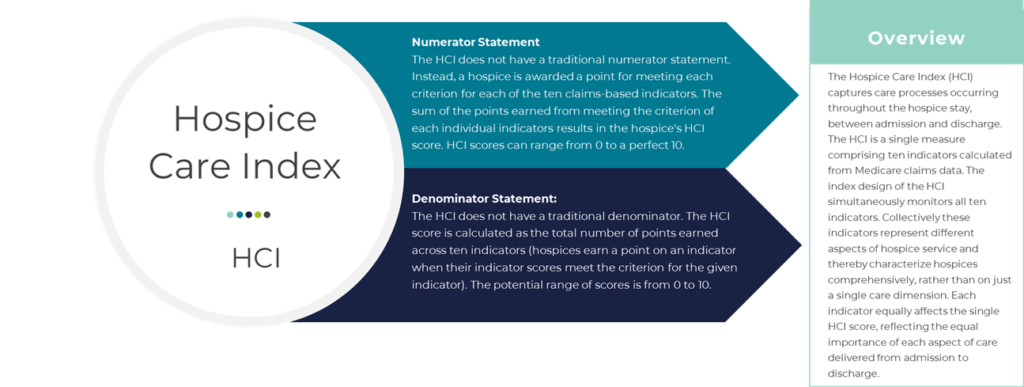
Are you prepared to optimize performance in the HCI and HVLDL measures?
Striving for quality patient care and the optimal patient experience are foundational to any hospice program, yet the path success is hampered with barriers such as lack of visibility into patient progress or decline, late referrals to hospice, short staffing, and a host of operational inefficiencies that can erode performance in these targeted measures. Data insights and retrospective review capabilities in your EMR will not singularly set you up for success with HCI and HVLDL measures. But coupled with the addition of clinical decision support tools fueled by predictive analytics, you will be better prepared to proactively manage it.
How can Medalogix Muse Help?
Medalogix Muse leverages deep neural machine learning to analyze hundreds of clinical documentation data points within your EMR to provide clinicians with near real-time insights into individual patient risk and disease trajectory. Its powerful model predicts, with up to 99% accuracy, the likelihood of each patient to pass away in the subsequent week.
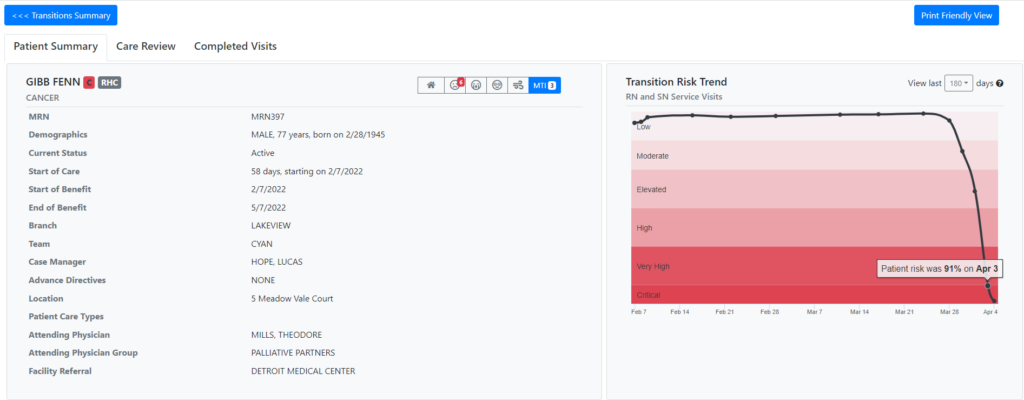
Supplied to the user in a web-based clinical decision support tool, this visit-by-visit resource management solution informs the right care at the right time. Additional features offer a population view of real-time operational measures such as length of stay, gaps in care, revocation history, and a summarized view of scheduled visits.
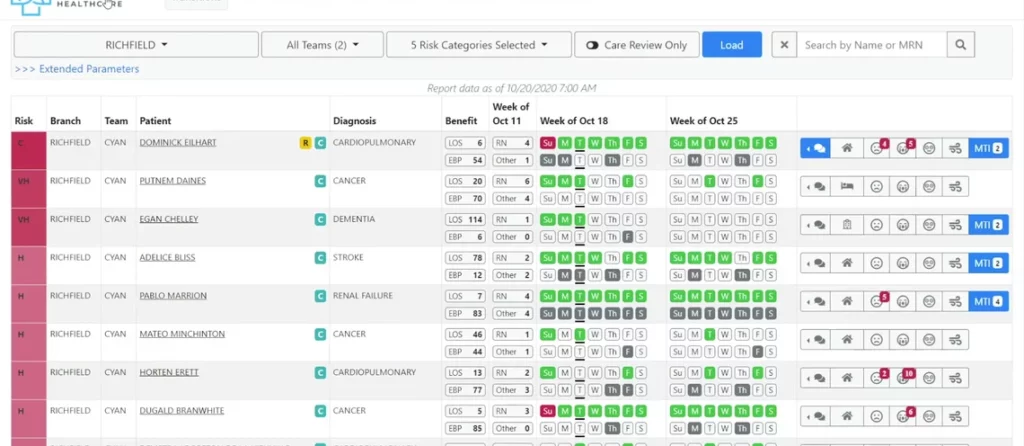
The unique ability of Muse to identify patient-specific risk and facilitate clinically focused triage that results in more informed inter-disciplinary care decisions so that optimal care is provided at the end of life, has positioned Muse as a powerful quality-driven tool.
Muse was developed to help hospices not only meet but exceed quality standards. Now, more than ever, Muse is aligned to the changing tides of the hospice industry, aligned to simplify the hospice care planning and care delivery process while seamlessly aiding providers in meeting expanding regulatory requirements.
Learn more about Medalogix and its suite of products backed by data analytics and machine learning. www.medalogix.com/solutions-summary.
Related Blogs
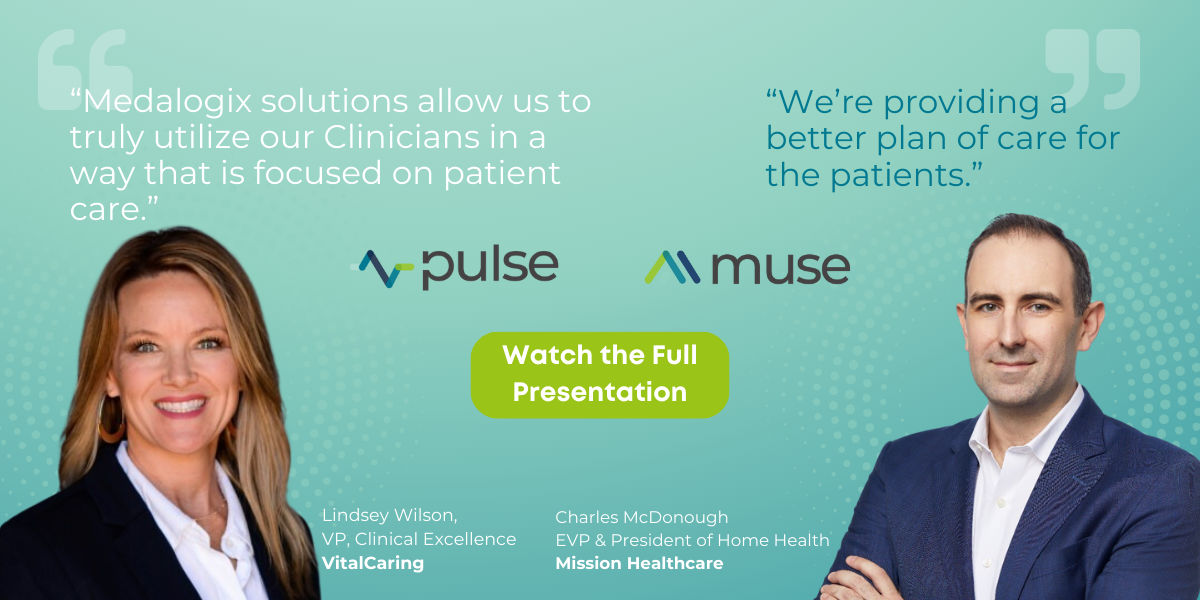
Homecare Homebase User's Conference 2024 - Mission Healthcare & Vital Caring | Innovation of the Patient Home Care Life Cycle
Mission Healthcare and Vital Caring both share their positive experience...

How hospice providers can flourish in an increasingly value-based care environment
Value-based care is the future of hospice Hospice care is critica...

Achieving consistently strong hospice quality performance with predictive technology
Quality measures are an essential element of the hospice industry, encou...


